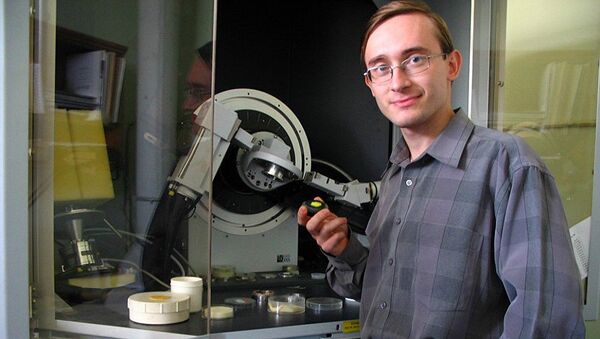An international team of chemists from China, Russia and Japan have synthesized a new crystal substance based on rare-earth metal oxides and have described its structure and properties. An X-ray of the new compound shows that it fits into a new and previously unknown class.
It has also been established that the compound’s properties make it possible to use this substance in the microelectronics industry, including the manufacture of computer monitors. An influential British journal ‘Chemistry: A European Journal’ is publishing the research project’s results.
Members of a research team from China’s Bohai University and Northeastern University in Shengyang, and Japan’s National Institute for Materials Science have combined rare-earth element nitrates with ammonia sulfates and hydrates and have synthesized a new luminescent powdery substance that can convert electricity into light. Many rare-earth compounds are luminescent. Although the result was hardly surprising, the new compound had an absolutely unique spectrum band. It did not resemble any known or predicted spectrum bands. After comparing the X-ray image with databases, the researchers found that the new compound did not fit into any known class.
The Chinese-Japanese team commissioned their Russian colleagues to determine the crystal structure of the substance, to describe the crystal lattice’s composition, including the atoms of various chemical elements forming this lattice, as well as the position of these atoms relative to each other.
Maxim Molokeyev of Siberian Federal University and the Kirensky Institute of Physics, affiliated with the Krasnoyarsk Federal Research Center of the Russian Academy of Sciences’ Siberian Branch, identified the question and confirmed that the new compound fit into a previously unknown class.
“We faced the following challenge: time and again, it proved impossible to obtain the new substance’s mono-crystal. Therefore we were unable to study mono-crystals and determine their structure with standard X-ray technology. This is even more difficult as far as powders are concerned,” Molokeyev said.
After studying the powder’s X-ray, Molokeyev found that the new material consisted of tetrahedrons (four-edged structures) featuring comprehensive sulfur oxide (SO42-) anions and ions of rare-earth elements surrounded by oxygen atoms. The sulfur oxide tetrahedrons were in disarray.
The new compound’s most unique property is that when heated to 800 degrees Celsius, it synthesizes luminophores during an environmentally friendly process. These luminophores can be used in the microelectronics industry for making light-emitting devices, such as computer monitors. It is noteworthy that only ordinary water is created during synthesis. This is important because toxic byproducts are usually emitted during the creation of other similar luminophores.

